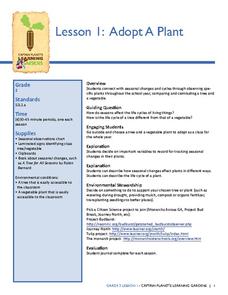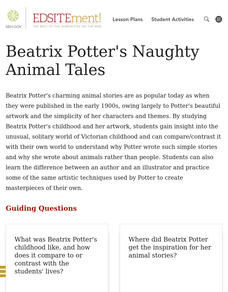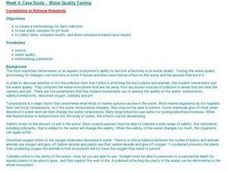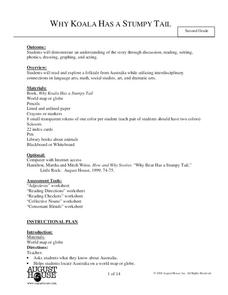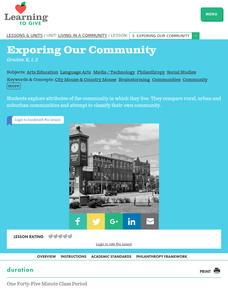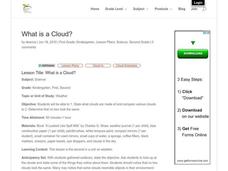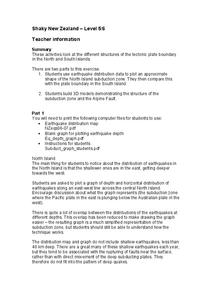Curated OER
Berlioz the Bear
Young children read the story, Berlioz the Bear and complete various reading and writing activities. They learn about fiction and non-fiction, and complete graphing and writing activities for the story. Youngsters draw the bear and use...
Houghton Mifflin Harcourt
Down on the Farm: English Language Development Lessons (Theme 8)
Down on the Farm is the theme of this series of ESL lessons designed to support reading, speaking, and listening skills. Over three weeks, your learners will have the opportunity to sing songs, play guessing games, create masks,...
Captain Planet Foundation
Worm Your Way Out of This
How can you provide healthy soil for your garden? Study worms, bacteria, and other microorganisms in a lesson about decomposition and organic compost. After discussing what you know about worms and watching a video, watch what worms do...
Captain Planet Foundation
Adopt-A-Plant
Note the way that plants change during the season by adopting a plant on your school campus. After your class chooses their plant, they research the plant's needs, how it differs from other plants, find ways to support their plant's...
Curated OER
What's Hatching in Kindergarten?
Students identify oviparous animals. They brainstorm a list of animals that lay eggs, read "Chickens Aren't The Only Ones" by Ruth Heller and then add to the list. Students complete a booklet that shows an egg and an oviparous animal.
Curated OER
Levels of Classification
Students use diagrams to compare structural differences that taxonomists use to classify animals. For this classification lesson plan, students compare structures of different species from given diagrams. In one diagram they identify the...
Curated OER
We're Zoologists!
Students listen to story, "Never, Ever Shout in a Zoo," by Karma Wilson, practice finding information from Internet, write information about one chosen zoo animal, draw picture of their zoo animal, pair up and read their My Zoo Animal...
Curated OER
Horns or Antlers-You Decide!
Students study the difference between horns and antlers. They identify animals who have each and draw pictures of these animals. They experience samples of actual horns and antlers.
Curated OER
Big Cat Locations
First graders explore different environments while studying the habitats of big cats. In this big cats lesson, 1st graders draw pictures of their favorite cats, learn about the areas where cats live, design a zoo habitat and make a...
Curated OER
Beatrix Potter's Naughty Animal Tales
Learners gain insight into the unusual, solitary world of Beatrix Potter's Victorian childhood and can compare/contrast it with their own world to explain why Potter wrote such simple stories and why she wrote about animals rather than...
Curated OER
Creating a Classification System
Middle schoolers create classification system for Arctic-dwelling animals, the Arctic hare in particular.
Curated OER
Water Quality Testing
Student explore factors affecting ecosystems. They test local water samples for pH level. After creating a methodology for data collection, they collect data, compare results, and draw conclusions based upon results.
Curated OER
Hatched From An Egg
Students discover how animals are born/hatched. In this life science lesson, students listen to a book entitled Chickens Aren't The Only Ones, and discuss animals that are hatched or born. Students receive a picture of an animal,...
Curated OER
Education: Passing Enough Knowledge to Survive to the Next Generation
Students compare and contrast the knowledge requirements for human and animal children. They identify the consequences of an animal if it is unprepared for the given environment. They discover the importance of education as well.
Curated OER
Look Alikes
Third graders compare and contrast the physical features of parents and offspring. In this life science lesson, 3rd graders classify a set of animal pictures according to their similarities. They share and explain their work in class.
Curated OER
Deep Sea Coral Biodiversity
Students research life forms of both tropical coral reefs and deep-sea coral reefs to discover the biodiversity of the ecosystems. They compare and contrast the diversity and adaptations of the two eco-systems, and draw a picture showing...
Curated OER
Why Koala Has a Stumpy Tail
Second graders explore Australian folktales. In this folktales lesson plan, 2nd graders gain knowledge about Australia and it's animals by reading books and discussion. Students find the adjectives in the book and write what they...
Curated OER
The Water Cycle
Students simulate the water cycle. In this water cycle lesson, students create a model of the water cycle. Students draw the water cycle and write a paragraph explaining their drawing.
Curated OER
Exporing Our Community
Students explore attributes of the community in which they live. They compare rural, urban and suburban communities and attempt to classify their own community. Each group illustrates their assigned area by drawing buildings, trees,...
Curated OER
Food Chains and Food Webs
Fourth graders investigate food chains. In this living environment lesson, 4th graders begin to understand the interdependence of organisms. Students describe the connections organisms have to the ecosystem. Students research online,...
Curated OER
The Kingdoms
Students review the various categories in taxonomy. In groups, they identify the characteristics of each kingdom and compare and contrast them. They define the terms binomial nomenclature and morphology. To end the activity, they...
Curated OER
What is a Cloud?
Students identify what clouds are made of. In this weather science lesson, students look at clouds outside the window and draw what they see in their journals. Students read the book It Looked Like Spilled Milk and identify what clouds...
Curated OER
Shaky New Zealand
Students explore Earth science by building a model in class. In this tectonic plate lesson, students identify the impact tectonic shifts have on humans and animals and where the plates and faults lie under New Zealand. Students examine...
Curated OER
Blowing In the Wind
In this wind dispersal activity, students read for information and comprehension. In this short answer and drawing activity, students answer six questions.



